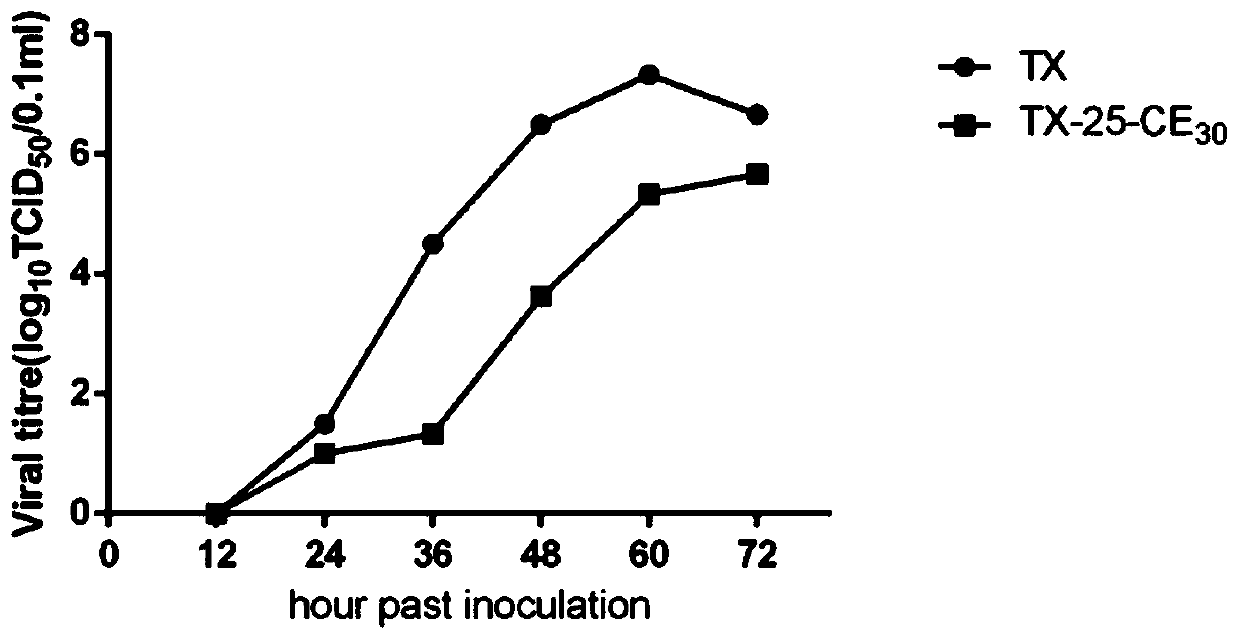Mammalian cell non-susceptible H9N2 subtype cold-adapted avian influenza virus rescue
An avian influenza virus, mammalian technology, applied in the direction of antisense single-stranded RNA virus, virus, antiviral agent, etc., can solve the problems of weak replication ability and difficult rescue success, and achieve the goal of increasing infection efficiency and improving rescue success rate. Effect
- Summary
- Abstract
- Description
- Claims
- Application Information
AI Technical Summary
Problems solved by technology
Method used
Image
Examples
Embodiment 1
[0030] 1. TCID of cold-adapted attenuated strains on different cells 50 Determination of
[0031] The day before inoculation, the cells to be tested, 293T, MDCK, Vero, COS-1, CEF, and DF-1, were plated in a 96-well cell culture plate. After the cells formed a monolayer, the culture supernatant was discarded and washed twice with sterile PBS. Add the Opti-MEM serum-reduced medium with a final concentration of 2 μg / mL TPCK trypsin, and inoculate the virus solution into the culture plate after 10-fold serial dilution. Each dilution is connected to 4 wells, with 0.1 mL per well. After infection, the cells are 33°C, 5% CO 2 Continue to cultivate under the conditions, count the number of positive wells after 48h, and calculate the virus TCID according to the Reed-Muench method 50 . The results showed (see Table 1) that canine kidney cell MDCK is a common influenza virus susceptible cell, and the TX strain lost the ability to replicate effectively on MDCK after the cold-adapted pa...
PUM
 Login to View More
Login to View More Abstract
Description
Claims
Application Information
 Login to View More
Login to View More - R&D
- Intellectual Property
- Life Sciences
- Materials
- Tech Scout
- Unparalleled Data Quality
- Higher Quality Content
- 60% Fewer Hallucinations
Browse by: Latest US Patents, China's latest patents, Technical Efficacy Thesaurus, Application Domain, Technology Topic, Popular Technical Reports.
© 2025 PatSnap. All rights reserved.Legal|Privacy policy|Modern Slavery Act Transparency Statement|Sitemap|About US| Contact US: help@patsnap.com



